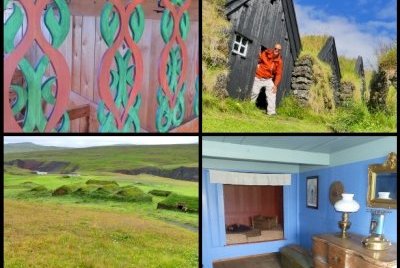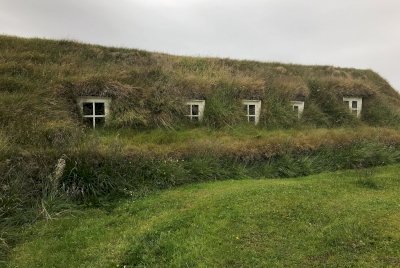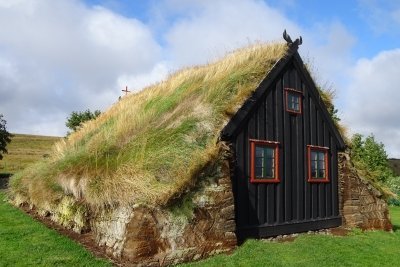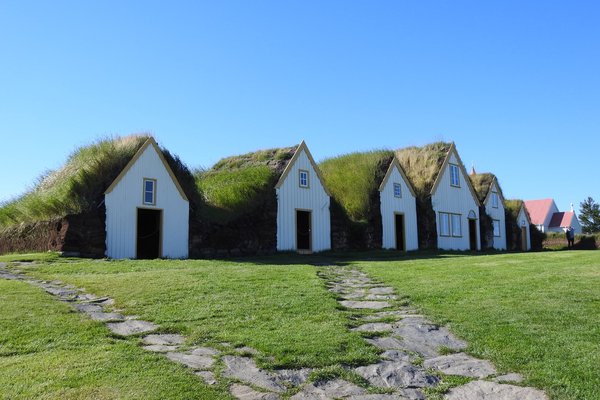Iceland
The Turf House Tradition
Site Info
Official Information
- Full Name
- The Turf House Tradition (ID: 5589)
- Country
- Iceland
- Status
-
On tentative list 2011
Site history
History of The Turf House Tradition
- 2011: Added to Tentative List
- Added to tentative list
- Type
- Cultural
- Criteria
Links
- UNESCO
- whc.unesco.org
All Links
UNESCO.org
- whc.unesco.org — whc.unesco.org
Community Information
- Community Category
- Secular structure: Residence
Travel Information
Recent Connections
News
No news.
Recent Visitors
Visitors of The Turf House Tradition
- Afshin Iranpour
- AlexSchedel
- alicemears
- Ana
- Ask Gudmundsen
- BaziFettehenne
- Bin
- ChrisN
- Christine
- Christoph
- Clyde
- ctravel
- Daniel Chazad
- Digits
- Els Slots
- Evgenii
- Federico P.
- Feldhase
- Femke Roos
- Frederik Dawson
- Geert Luiken
- George Gdanski
- GeorgeIng61
- Grendel Gongan
- Hammeel
- Hdhuntphotography
- ih0000
- Jacob Otten
- Jana and Matt
- Jan-Willem
- Jan Zimmermann
- Jawnbeary
- Jay T
- Jeanne OGrady
- Jonas Kremer
- jonathanfr
- Kasia M.
- Kevin McFarland
- Lithobates
- Little Lauren Travels
- Luboang
- Ludvan
- Maja
- Marton Kemeny
- MaxHeAnouBen
- michaelsballard
- MMM
- MoPython
- nan
- NoahFranc
- Olli-Pekka Turunen
- PabloNorte
- Patrik
- Patrik_globe
- Philipp Peterer
- Pieter Dijkshoorn
- Piotr Wasil
- Ralf Regele
- Randi Thomsen
- RobRos
- Roel Sterken
- Roger Ourset
- Roman Bruehwiler
- Roman Raab
- S. Anril Tiatco
- Sclowitz
- Solivagant
- Spiceboy
- Stanislaw Warwas
- Svein Elias
- Szucs Tamas
- Tarquinio_Superbo
- Tatiana Nikulnikova
- Thomas Buechler
- Thorben
- Timothy C Easton
- tony0001
- Walter
- Zach
Community Reviews
Show full reviews
I visited 12 out of the 14 locations which make up this fun tWHS in 2022. This tWHS turned out to be a very fun quest/treasure hunt to explore and visit some of the few Icelandic cultural sites on the island. For starters, this quest requires a rental car and a good GPS or Google Maps with Wi-Fi connection (4WD not necessary but make sure you have full insurance cover including windscreen damage which will prove useful throughout your vacation due to the infamous gravel roads).
If you're covering the whole ring road, only 4 of the 14 locations are really close to the actual ring road with little or no gravel roads involved to be able to visit. These are: 1) Árbær - a mere component within another open-air museum close to Reykjavik; I managed to enter for free by entering from a side entrance just next to the small cafeteria, probably I was just lucky that the staff were having their lunch break. As an addition to the other locations, I still enjoyed my visit, especially since the entrance ticket would have cost me an arm and a leg and it was fun to have a better overview of the different architectural styles in Iceland all in one place, but simply as another turf house, it has no value added and actually it would benefit the tWHS if it were left out. 2) Núpsstaður - this is private property and a gate prevents access by car, so …
Keep reading 0 comments
Iceland isn’t a country to visit for its rich cultural heritage. It has Thingvellir as a cultural WHS, but that’s a cultural landscape with mostly intangible features. The capital Reykjavik has some modernist constructions of interest (the Hallgrímskirkja, several art museums and sculptures), but the rest of the country was quite poor and isolated until the beginning of the 20th century. A reminder of those times lies in the Turf House Tradition, a series of 14 locations on the Tentative List.
Most of those 14 properties lie close to the Ring Road. During my first attempt I was confronted with a closed gate at Keldur after driving 4 km on an unpaved road, so I decided to be more picky with the others as not all are welcoming tourists.
The first satisfying one lies 15 kilometers east of Skaftafell: the turf church Hofskirkja (pictured). It is the village church of the hamlet of Hof. This turf-roofed church, which is still in use, was built at the end of the 19th century. It is set in the middle of a contemporary cemetery, which is perhaps even more interesting than the church itself. Each grave lies beneath a small grassy mound.
My other visits are from the north of Iceland. The peat church Víðimýrarkirkja for example: its black-and-red exterior is the most beautiful of the series. It is accessible for most of the day, the caretaker seems to live next to it and he opened the church when he …
Keep reading 0 comments
In July 2020 we took the “Island roundtrip” visiting all Iceland’s WHSs and TWHSs. The turf houses are the dominant part of the TWHSs because of its numbers, thus the turf houses were always on our minds in the trip.
The turf houses is a remnant from then viking age and where probably the building standard in northern Europe for some time. Eventually it is replaced by wooden houses, but probably is the lack of trees in Iceland made that difficult. Hence the technique has survived.
Between the 14 buildings enlisted in this TWHS there are a variable quality/standard/authenticy from house to house so each one needs a mini review:
1. Austur-Meðalholt…is a museum with opening hours until 6 p.m, but when we arrived on a Sunday at 5:15 it was closed. We could still visit the exterior. The facades and roofs look new and not very authentic. Not the best example, but still ok. The advantage is the closeness to Reykjavik.
2. Keldur…is also a museum but very connected to an active farm. You omit the farm to find the museum. It opens at 10 a.m. and since we arrived at 9 once again we had to enjoy the exterior only, but this looks more authentic, hence “enjoy”.
3. Núpsstaður… is not (yet ?) a museum. It is a closed gate by the main road 1, but you can park there and walk up to the house. There is a white house amongst the …
Keep reading 0 comments
Turf houses were actually the primary (and almost solely) form of housing in iceland from the viking ages till the 19th century. Trees and timber were in very short supply in iceland. Turf houses have only a light wood framework, the roof and many walls are made out of turf blocks. Turf houses have the advantage of a good isolation, but are difficult to maintain and could only be built to a certain size - which is why even bigger turf buildings are an aggregation of relatively small huts. Turf houses only last for roughly a century, which means that all of the islandic turf houses are no older than the 19th century. Many of the buildings are mentioned in older sources, but were rebuilt again and again throughout the ages. It is not really known if the existing turf houses look like the ones in medieval times, but no fundamental difference is assumed.So what is it like to visit these houses ? Quite a nice experience, I must say, and a nice change to all the overbearing landscape in iceland. Of the roughly a dozen buildings in the proposal, I visited four locations, all of which where quite easily reachable by car from the ring road. In fact, there were so close to the road that it is surprising that they are not featured more prominently in travel guides for iceland. Some notes on the individual houses:
- Arbaer: An original turf farmstead and a relocated turf church,forming …

